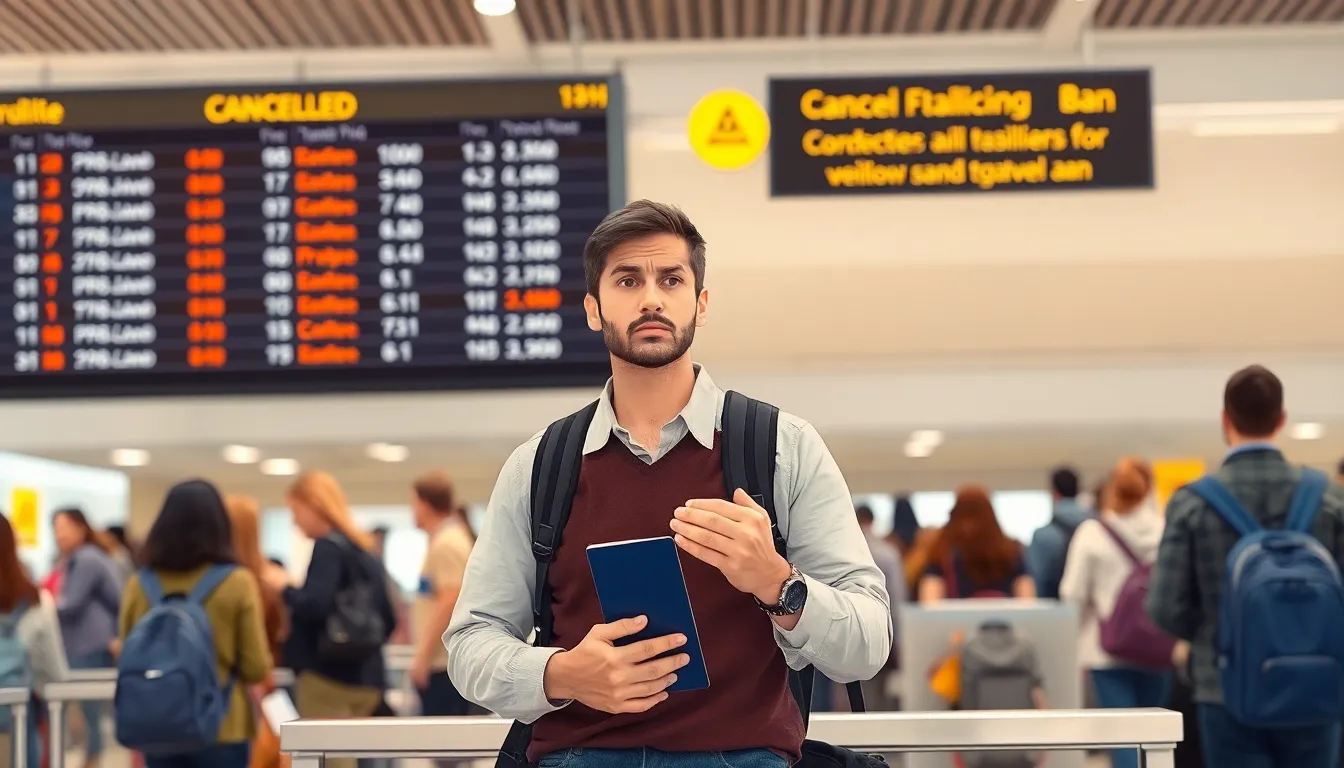Table of Contents
ToggleTraveling the world is often seen as a rite of passage, but what happens when your dream destination suddenly becomes a no-go zone? Picture this: you’ve got your bags packed and your itinerary ready, only to find out that 36 countries have decided to throw a wrench in your plans. It’s like being invited to a party only to discover it’s been canceled—awkward, right?
This article dives into the quirky and sometimes baffling world of travel bans. From the reasons behind these restrictions to the countries currently on the list, it’s a rollercoaster ride of international relations and travel woes. Buckle up as we explore the ins and outs of these travel bans and what they mean for the adventurous spirit in all of us. After all, who said travel planning couldn’t use a little humor amidst the chaos?
Overview of the 36 Countries Travel Ban List
Travel bans affect numerous countries, creating barriers for those eager to explore new destinations. Currently, 36 nations face restrictions, each stemming from unique circumstances. Governments impose these bans primarily for health, security, and diplomatic reasons.
A wide range of travel regulations exist, varying by country and situation. For example, some nations restrict entry due to public health concerns, often related to unprecedented outbreaks. Others may enforce bans for security reasons, especially when geopolitical tensions rise.
Countries currently on the travel ban list represent diverse regions. The list includes regions from Asia, Africa, Europe, and the Americas. As an example, nations like North Korea and Iran frequently experience stringent travel limitations. Meanwhile, Central American countries might impose temporary measures based on situational threats.
Travelers are encouraged to stay updated on changes regarding these restrictions. Most governments provide information through their official travel advisory websites. Anyone planning to visit affected countries should familiarize themselves with current guidelines.
Additionally, some countries may require special permits or additional documentation for entry. This can create further complications for travelers hoping to enter these nations without issues. A list of places affected includes countries that are significant for global tourism.
Travelers often need to navigate these restrictions with flexibility. Adapting travel plans based on the latest updates ensures smoother transitions. Monitoring the travel ban list remains crucial for anyone considering international travel.
Reasons for the Travel Ban

Travel bans affect numerous countries for various reasons. Understanding these factors can help travelers navigate their plans effectively.
Health Concerns
Health concerns frequently drive nations to implement travel bans. Outbreaks of infectious diseases prompt governments to protect their citizens. Instances like the COVID-19 pandemic highlighted how quickly health risks can lead to widespread restrictions. Countries prioritize public safety by limiting entry from regions experiencing severe outbreaks. Quarantine measures become standard, complicating travel for those wishing to visit. Many nations monitor health statistics to modify travel guidelines regularly. Such vigilant oversight ensures that citizens remain protected while managing incoming travelers effectively.
Security Issues
Security issues often result in travel bans as countries seek to uphold national safety. Threats from terrorism or civil unrest influence decisions to restrict entry from certain nations. Incidents of violence or geopolitical tensions can trigger immediate responses, limiting access to affected areas. Diplomacy plays a key role in these situations, as governments negotiate external relations based on security assessments. Various intelligence reports inform these decisions, highlighting risks associated with specific regions. Nations remain watchful, adapting their travel policies in response to evolving global security landscapes.
Impact on Travel and Tourism
Travel bans imposed by 36 countries significantly affect global tourism. Countries experience reduced traveler numbers, impacting local economies and businesses.
Economic Consequences
Declines in tourism revenues challenge industries reliant on visitor spending. Hotels, restaurants, and transportation services may face financial hardships. According to the World Tourism Organization, global tourism losses reached over $1 trillion in 2020 due to travel restrictions. Businesses that depend on international tourists often struggle to adapt to sudden decreases in patronage. Many workers in the tourism sector face layoffs or reduced hours, resulting in increased unemployment rates. Governments may respond with financial aid packages, yet the effectiveness varies by region. These measures help some businesses but often fall short, leading to long-term economic strain.
Traveler Experiences
Traveler experiences shift dramatically with the imposition of bans. Trip cancellations create frustration and uncertainty among individuals planning vacations. Many travelers encounter challenges while seeking refunds or navigating rescheduled itineraries. Furthermore, the anxiety of traveling to a location with a travel restriction increases stress levels. Individuals hoping to explore new cultures or visit family may feel trapped. Creative travel plans often emerge as people consider alternative destinations. Virtual tours and local explorations gain popularity while international travel remains restricted. Maintaining flexibility in travel plans becomes essential for those willing to explore safer options.
Countries Affected by the Ban
Travel bans impact numerous countries, causing disruptions in international travel. Various nations across different continents face restrictions.
Region-Specific Bans
Countries in Asia, Africa, Europe, and the Americas experience unique travel bans. Asian nations such as India and Indonesia face significant limitations due to health concerns. In Africa, countries like South Africa and Nigeria also feature on the ban list, reflecting security issues. Meanwhile, European states such as the United Kingdom and Germany enforce restrictions based on diplomatic relations. North American nations, including the United States and Canada, maintain bans that vary by region, influenced by COVID-19 variants and vaccination rates.
Duration of Travel Restrictions
The duration of travel restrictions fluctuates significantly. Many countries reassess their bans weekly based on the evolving health landscape. For instance, some nations may lift restrictions after a month, depending on vaccination rollouts and case numbers. Conversely, other locations may extend bans for several months, especially if health risks remain high. Travelers should monitor official government announcements for the latest updates regarding specific durations. These changes can affect travel plans rapidly, highlighting the necessity for flexibility and adaptability.
Travel bans affecting 36 countries present a complex landscape for travelers. Staying informed about these restrictions is vital for anyone planning international trips. As circumstances evolve rapidly, adaptability becomes key in navigating travel plans.
While these bans pose significant challenges, they also prompt creative alternatives for exploration. Travelers are finding joy in local adventures and virtual experiences as they wait for borders to reopen.
Understanding the reasons behind these restrictions helps travelers make informed choices. With careful planning and flexibility, navigating the world of travel bans can transform into an opportunity for new experiences.







